How seriously should communicators take memes?
About the author
Jack Shaw prepared this thought leadership article as part of a CIPR Professional PR Diploma assignment while studying with PR Academy.
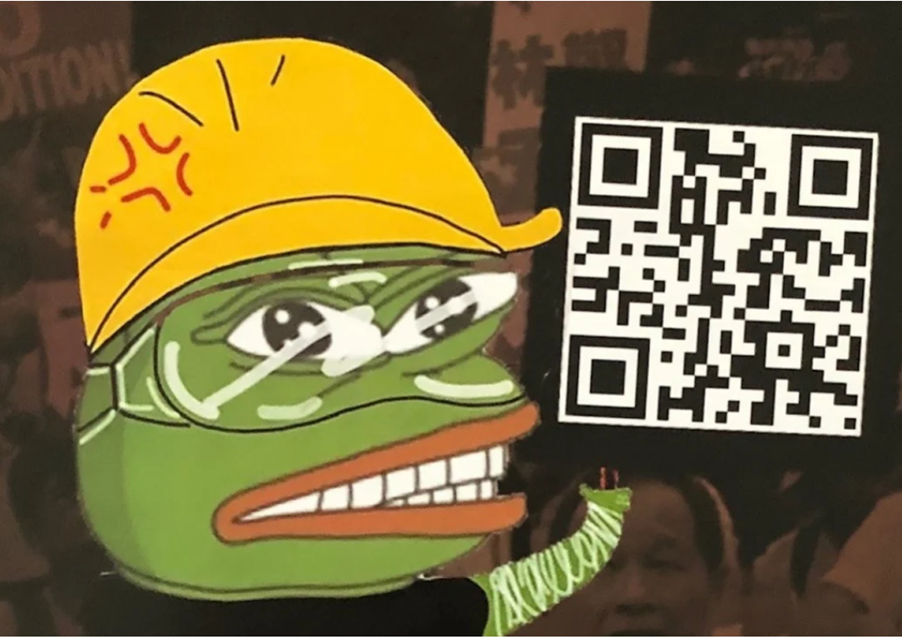

Despite the widespread use of memes over the last decade, corporate communicators remain polarised over whether they should employ them or not. They are either disregarded as unprofessional, meaningless or both, or they are in-demand, have the power to re-invent corporate brand, provide organisations with a human face and enable them to engage audiences they wouldn’t otherwise. Limor Shifman describes this dichotomy as “enthusiastic advocators” who argue that “memes explain everything” versus opponents who argue that memes explain nothing [1].
Yet there is a middle-ground. One that recognises the pitfalls of memes, the context in which they operate, their genealogy and the changing meaning ascribed to them across space, time and culture, all of which pose challenges for practitioners, yet at the same time accepts that they are a popular tool used by internet users to communicate and understand the world – particularly younger people.
Done well, memes enable organisations to engage with stakeholders in new ways. This article is an attempt to ground ‘memevertisements’ in evidence so that practitioners can identify the risks associated with memes and adopt them as part of their marketing and communication strategies.
In simple terms, memes are understood as photos overlayed with text. They reflect social and political commentary or are emotional expressions, with emotion mediated through satire, ridicule, anger or depression [2]. The memes that go viral are often entertaining, relatable and insightful. They draw their power from their simplicity, anonymity and ability to evolve, but memes do not evolve randomly. Memes evolve in the discursive context in which they are created: they are coded with meaning, and a symptom of and reflect digital culture. As a tool, memes share similarities with short animations, emojis and videos that are commonplace across image-laden social media platforms – Instagram, Reddit, Pinterest, Twitter – but given their versatility they occupy a unique place in the practitioner’s toolkit.
Memes continue to grow in popularity too. 75% of 13-36-year-olds now share memes, with 55% sharing them weekly and 30% sharing them daily [3]. The pandemic has since increased the length of time the public spend online and organisations have responded by increasing their social media presence and budgets [4].
To successfully make use of memes, practitioners need to conceptualise them not as threats, but as opportunities. The practitioner with ingenuity, a sense of humour, and content creation experience is best placed to take on this role, especially if their role requires them to engage in dialogic communication at speed, as is the case on social media.
Meme creation and co-creation
To set out why memes can add value to organisations, we first need to understand how memes come into being. Meme templates can be replicated or altered in three ways: content (layout, image, text), symbolism (the ideas and ideologies contained within it) and stance (the position of the author in relation to the message) [5].
In practice, memes retain some resemblance to their original meme template but are sufficiently altered to accommodate individual expression. Baked into meme creation is, therefore, a collective-individual tension [6]. The Hope meme is a case in point. The original template, centred, has mutated across multiple environments, so much so that it symbolises ideologically incompatible meanings (Socialism, Nazism, Republicanism) as well as more prosaic representations of The Simpsons and Star Wars.
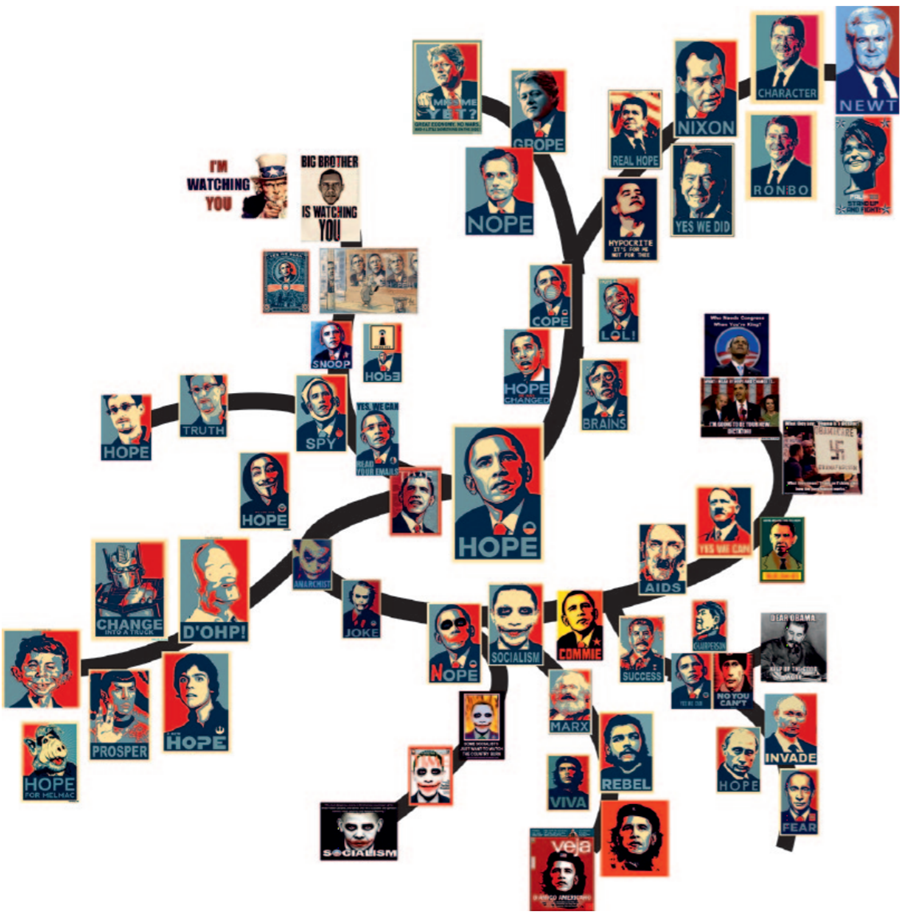
The Pepe meme exhibits a similar versatility. In America Pepe became an alt-right symbol (so much so that the Anti-Defamation League branded it a hate symbol). Pepe’s creator, Matt Furie, partnered with the Anti-Defamation League to reclaim its original meaning through a #SavePepe campaign and officially killed Pepe off in the comic-book series from which the the character originated [7]. Despite this, pro-democracy activists in Hong Kong used Pepe as a symbol of hope and even US food-chain Wendy’s claimed Pepe, changing Pepe’s skin and hair to Wendy’s brand colours [8].
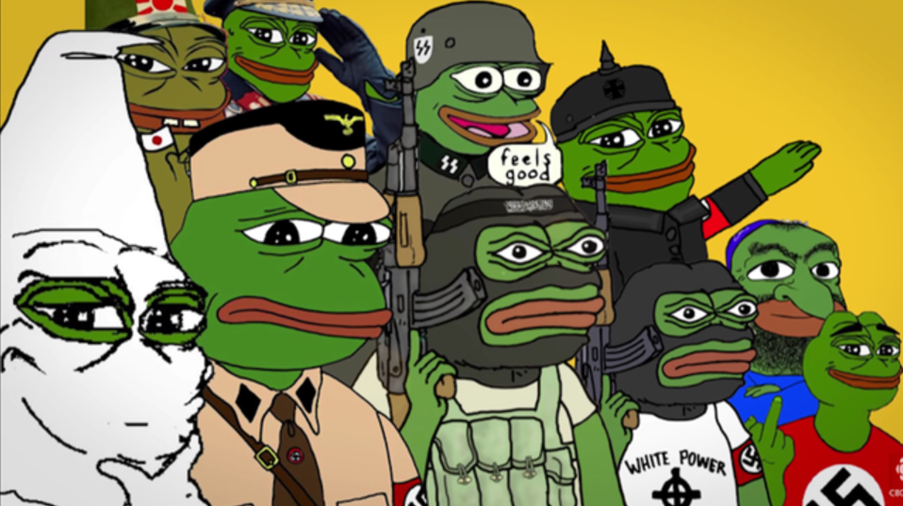
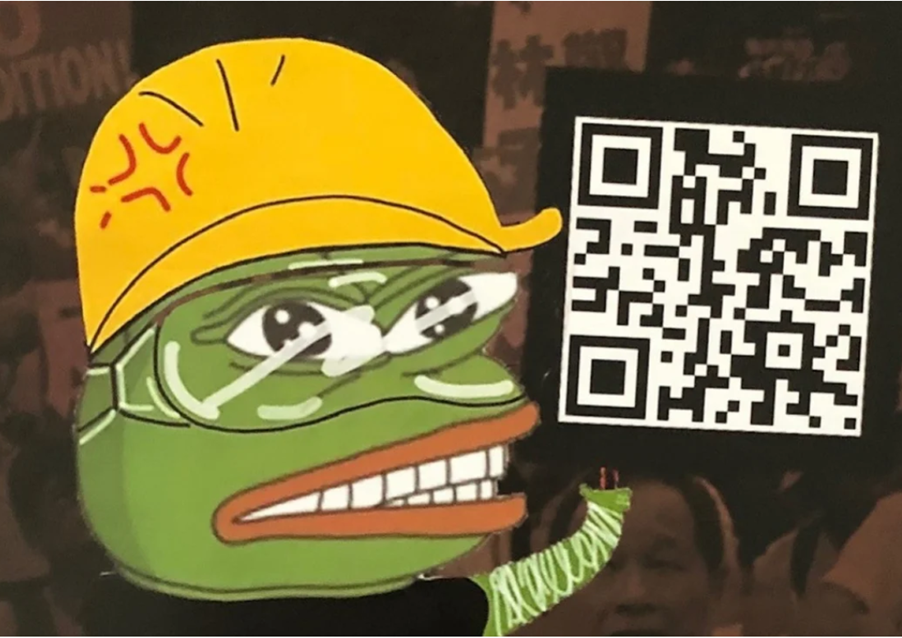
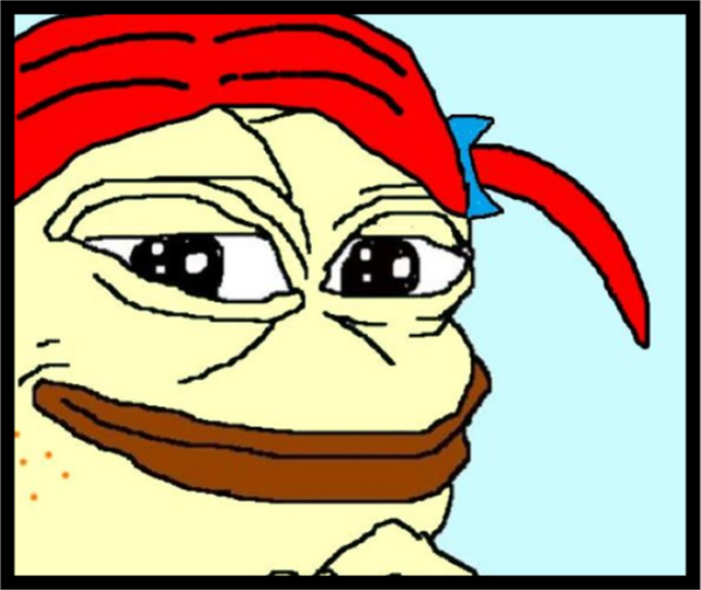
As Pepe and Hope illustrate, memes are representative of a ‘glocal’ digital culture – a combination of local and global digital culture. Memes are something shared, but something specific across geography, time, political persuasion. Wendy’s Pepe demonstrates that organisations can create memes successfully by leveraging their existing popularity. Given communicating with stakeholders is no longer a one-way process, memes are also a powerful tool practitioners can use to harness the conversations happening about them and around them, rather than just with them.
Despite multiple readings of Pepe, that hope and racism co-exist in the same meme suggests memes shed some of their original context as they gain wider appeal. As such, the reputational risk facing organisations that adopt memes with nuanced or politicised histories is thought to be limited [9]. Through meme generators such as Know My Meme, practitioners can also trace the evolution of memes thereby mitigating reputational risk during the meme selection process prior to external use. This should be an integral and iterative element of communications planning.
In another example, Ryanair recently published a meme mocking the Government’s coronavirus response following accusations that parties were held at Downing Street. Like Wendy’s Pepe, Ryanair’s meme went viral because of its discursive context: there had been rolling coverage of the events in Downing Street. Ryanair’s memevertisements enabled it to create hype and publicity that put Ryanair at the centre of its own story, securing positive national coverage in the process. The #Ryanair hashtag also went viral on the Twittersphere, replacing those that used the hashtag to complain about Ryanair’s service with those who congratulated its social media team.
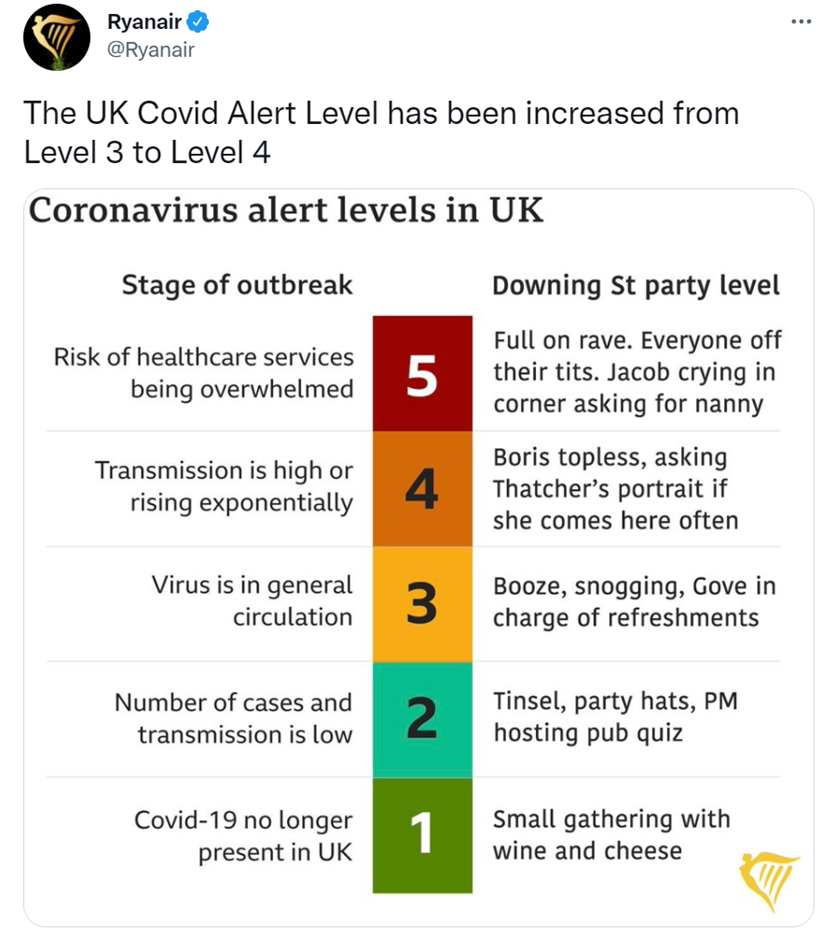
Though Ryanair’s approach to memevertisements has been successful – and was recently lauded by the Financial Times – there are three caveats that practitioners need to consider at part of the meme creation process. First, memes need to be deployed strategically. If memes are used as gimmicks rather than value-based content, as Wendy’s and Ryanair demonstrate, they alone will have little long-term impact. Memes cannot overcome Ryanair’s reputation as the worst airline for seven years running or that its Chief Executive once suggested charging passengers to use the toilet. Second, there is a blurred line between corporate humour and bad taste, and organisations will need to draw on good practice to remain on the correct side of that line. Third, if memes are deployed reactively, as in Ryanair and Wendy’s case, organisations need to be agile. That may mean operating newsroom-style communications functions that empower practitioners to respond with humour and creativity at speed [10].
Despite their limitations, by drawing on meme templates not of their own making which are typically peer-to-peer or bottom-up inventions, Wendy’s and Ryanair both demonstrate how organisations can co-produce memes successfully. Though digitisation has democratised the production and consumption of communications activity and content creators continue to challenge the narratives organisations promote to define publicly who they are, memes give organisations an opportunity to level the playing field. Through memes organisations can tell stories about themselves in visual and emotionally engaging ways, giving them greater power over the construction of social reality. Weetabix did so recently to good effect by promoting Heinz beans on Weetabix. It ignited a debate on Twitter, with thousands concluding it would taste horrible. In response, McVitie’s, Papa Johns, Iceland and Google replicated the Weetabix meme [11].
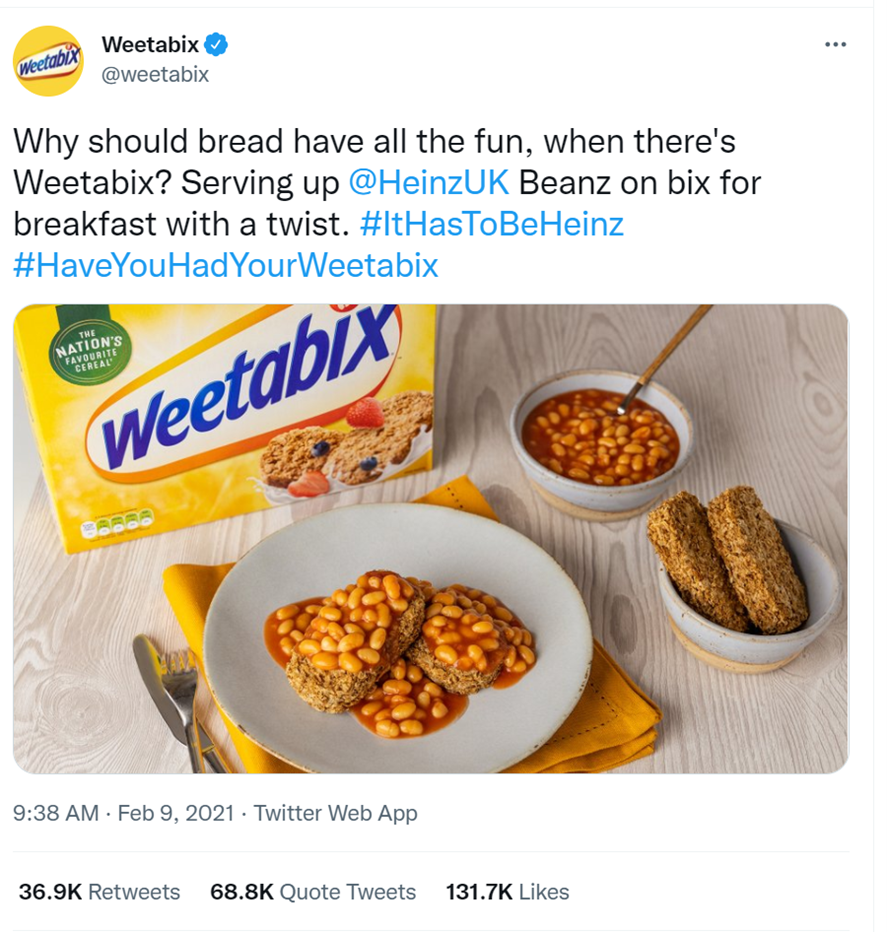
Weetabix’s success demonstrated that as organisations attempt to close the distance between themselves and their customers with informality and humour, memes enable them to step into space traditionally occupied by peer-to-peer communication. Brands appear more human and personable, their sales objectives more subtle.
However, unlike peer-to-peer memes, corporate meme variation could risk diluting its strategic message and as such organisations may need to think about how they restrict variation – such as through creating multiple iterations of their own memes, for example [12].
Memes: Emotional, visual storytelling?
How we consume content has also changed over time. Empirical evidence alone, logoi, is no longer an adequate tool of persuasion and competition for finite attention is fierce. That is why emotionally charged storytelling, symbols and images are so powerful: it is quicker to de-code the meaning behind memes. As a result, it can lead to higher brand recall and may explain why 20% of 16-29-year-olds in the US already share visual content from brands on a daily basis, far higher than other forms of corporate content are shared [13].
As devices that organisations can deploy to stimulate debate, capture attention and persuade stakeholders, seen through the analytical lens of John Cacioppo’s Elaboration Likelihood Model memes can do so through the ‘peripheral route’, which relies on primordial cues: fear, desire [14]. Though Cacioppo’s model was developed in 1980, linguists have since concluded these drives increase the virality of memes. Food is also cited as a primordial drive, and that such content is predisposed to virality may explain why organisations that sell foodstuffs, anecdotally, are more willing to deploy memes [15].
Frameworks for practitioners
Despite the complexity of memetics, the existing body of evidence and concepts is sufficient to guide action. Practitioners can draw on Noel Murray’s ‘advertising model’, which outlines six stages of a meme’s success: transmission, decoding, infection, storage, survival and re-transmission [16]. Much of this ground has already been covered, but it should be added that organic transmission through authentic meme-use reaps higher rewards. Given this, practitioners that consider the PESO model should do so as part of an integrated approach that builds partnerships with content creators.
Memes are not successful when thrown into the ether and without broad appeal are less likely to go viral. Building on Murray’s work, Filippo Menczer identifies the typologies of virality [17]. These include “smoothly decaying” memes which become popular but then return to baseline levels and remain there, such as Wendy’s Pepe. Using its branding colours rooted Wendy’s Pepe too closely with Wendy’s as an organisation, meaning it’s unlikely to be disseminated organically outside of the context it was created. Then there are “spikey decaying” memes, which are similar, but their popularity occasionally returns. Weetabix fits this meme-type because its appeal is broader.
Unlike Wendy’s or Ryanair, Weetabix’s meme forced the public to question the assumptions it held about the organisation: “Doesn’t Weetabix only go with milk?” many asked. Third, “levelling off” memes go viral but continue to retain some level of popularity. Iterations of Pepe sit within this meme-type as they continue to be used. With this knowledge, practitioners can create and co-create memes with broad enough appeal to secure organic transmission. Doing so will make memes more impactful and drives engagement, as was the case with Weetabix which recorded a 15% increase in sales [18].
Recommendations
As a form of corporate communication, memetics is in its infancy. Yet the challenges facing practitioners today cannot be met with yesterday’s tools. If practitioners are to exploit memes – which by dint of their popularity suggests memevertisements will only increase – organisations will need to familiarise themselves with the history of memes and how they evolve.
Pursuing a marketing strategy that prioritises digital technologies as well as the power of emotion-led communications is a good start. Organisations will need to develop content creation and curation strategies which can organically build a community of influencers. Dr Heather Yaxley’s content creation and curation model provides practitioners with a framework in this respect [19]. In the process of dissemination and consumption, practitioners should also build relationships with the content creator community their organisations give rise to – who will engage, adapt and respond to their memes.
As content creation and meme-use evolves (and it is already evolving as more organisations make use of memes and as other forms of digital communication are created and embedded), organisations will need to bring together multi-disciplinary teams comprising social media experts, wordsmiths, data analysts, graphic designers and content creators. Ford Motor Company’s Content Factory did exactly that in 2008. The speed at which memes are co-created, replicated and consumed demands communications teams without rigid hierarchies. Instead, practitioners will need to sit within agile teams that resemble newsroom structures and are positioned strategically within their organisation. Practitioners are well placed not just to generate ideas and spot content creation and curation within their networks, but also act as guardians of corporate reputation and the front-line defence in issue and risk management. Only in understanding how memes operate can organisations do so successfully.
Endnotes
[1] Shifman, L., 2014. Memes in a Digital World: Reconciling with a Conceptual Troublemaker. Journal of Computed-Mediated Communication, Volume 18, 3, p.362.
[2] Nissenbaum, A., Shifman, L., 2018. Meme Templates as Expressive Repertoires in a Globalising World: A Cross-Linguistic Study. Journal of Computer-Mediated Communication, Volume 23, 5, p294.
[3] YPulse, 2019. 3 Stats That Show What Memes Mean to Gen Z & Millennials. URL: https://www.ypulse.com/article/2019/03/05/3-stats-that-show-what-memes-mean-to-gen-z-millennials/.
[4] Ofcom, 2020. UK Internet Usage Surges to Record Levels, URL: https://www.ofcom.org.uk/about-ofcom/latest/media/media-releases/2020/uk-internet-use-surges.
Marketing Dive, 2021. Nearly Half of Executives Expect Social Marketing Budgets to Double in the Next 3 Years, Study Finds, URL: https://www.marketingdive.com/news/nearly-half-of-execs-expect-social-marketing-budgets-to-double-in-next-3-ye/598012/.
[5] Nissenbaum, Meme Templates as Expressive Repertoires in a Globalising World, p295.
[6] ibid, p.306.
[7] Anti-Defamation League, 2016. ADL Joins With “Pepe” Creator Matt Furie in Social Media Campaign to #SavePepe, URL: https://www.adl.org/news/press-releases/adl-joins-with-pepe-creator-matt-furie-in-social-media-campaign-to-savepepe#.WAkCn_krLcs.
Anti-Defamation League, Hate Symbol Database. URL: https://www.adl.org/education/references/hate-symbols/pepe-the-frog.
[8] South China Morning Post, 2019. How Pepe the Frog Became Face of Hong Kong Protests – Despite Cartoon Being a Symbol of Hate in US, URL: https://www.scmp.com/lifestyle/arts-culture/article/3023060/how-pepe-frog-became-face-hong-kong-protests-despite-cartoon.
[9] Berg, S., Literat, I., 2019. Buy Memes Low, Sell Memes High: Vernacular Criticism and Collective Negotiations of Value on Reddit’s MemeEconomy. Information, Communication & Society, Volume 22, 2, p.240.
[10] Academic Society for Management & Communication, 2019. It’s All About Content: Strategic Topic Management in Agile Organisations, p.8.
[11] See Appendix 1. [NB not included in the published article]
[12] Diehl, T., Dobusch, L., Seiffert-Brockmann, J., 2017. Memes as Games: The Evolution of a Digital Discourse Online. New Media & Society, Volume 20, 8, p.7.
[13] ZD Net, 2017. The Maths Behind the Memes: Why we Share on Social Media, URL: https://www.zdnet.com/article/the-maths-behind-the-memes-why-we-share-on-social-media/.
[14] PR Academy, 2020. CIPR Professional PR Diploma Reader, p.107.
[15] Bury, B., 2016. Creative Use of Internet Memes in Advertising. World Scientific News, Volume 57, p.35.
[16] Manrai, A., Manrai, L., Murray, N., 2013. Memes, Memetics and Marketing: A State-of-the-Art Review and a Lifecycle Model of Meme Management in Advertising, pp.337-341.
[17] Lonnberg, A., Xiao, P., Wolfinger, K., 2020. The Growth, Spread and Mutation of Internet Phenomena: A Study of Memes. Results in Applied Mathematics, Volume 6, 100092, p.2.
[18] Campaign Live, 2021. What Made Weetabix Baked Beans a Viral Hit – from the Agency Behind It, URL: https://www.campaignlive.co.uk/article/made-weetabix-baked-beans-viral-hit-%E2%80%93-agency-behind/1707094
[19] PR Academy, PR Diploma Reader, p.99.